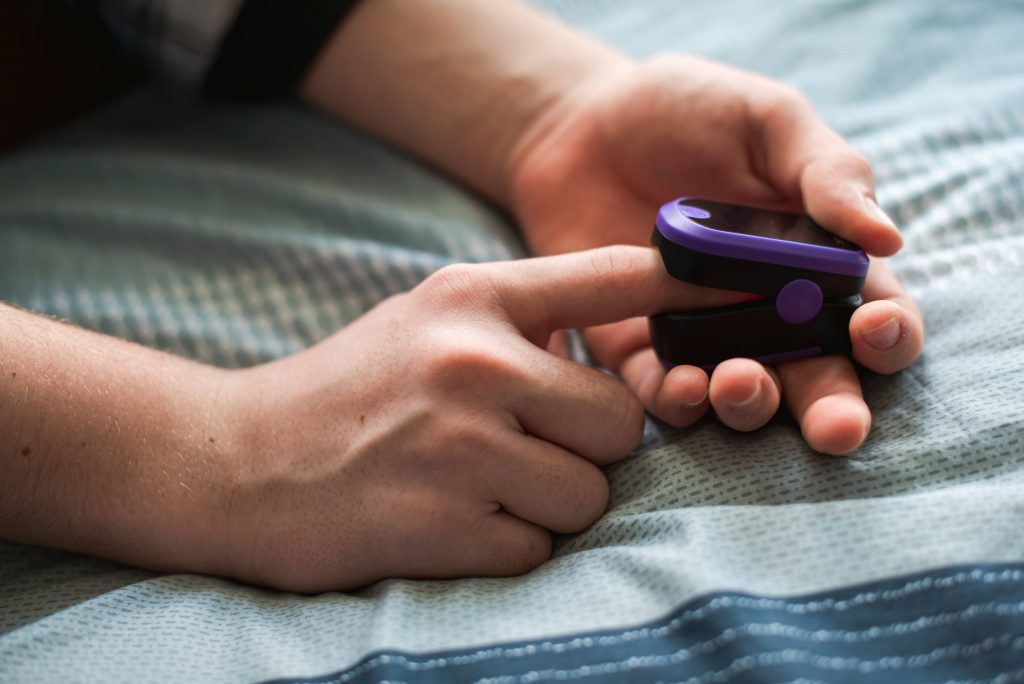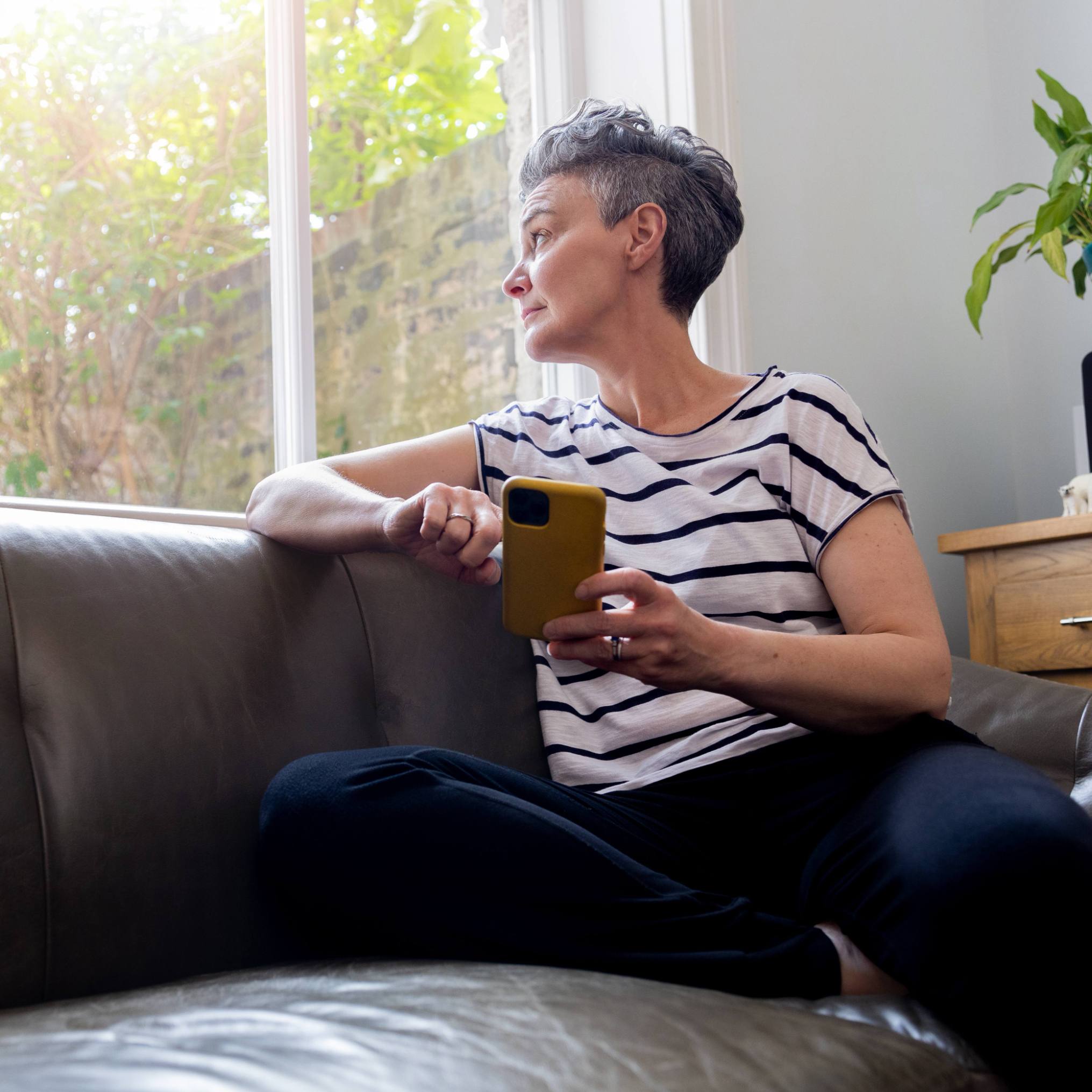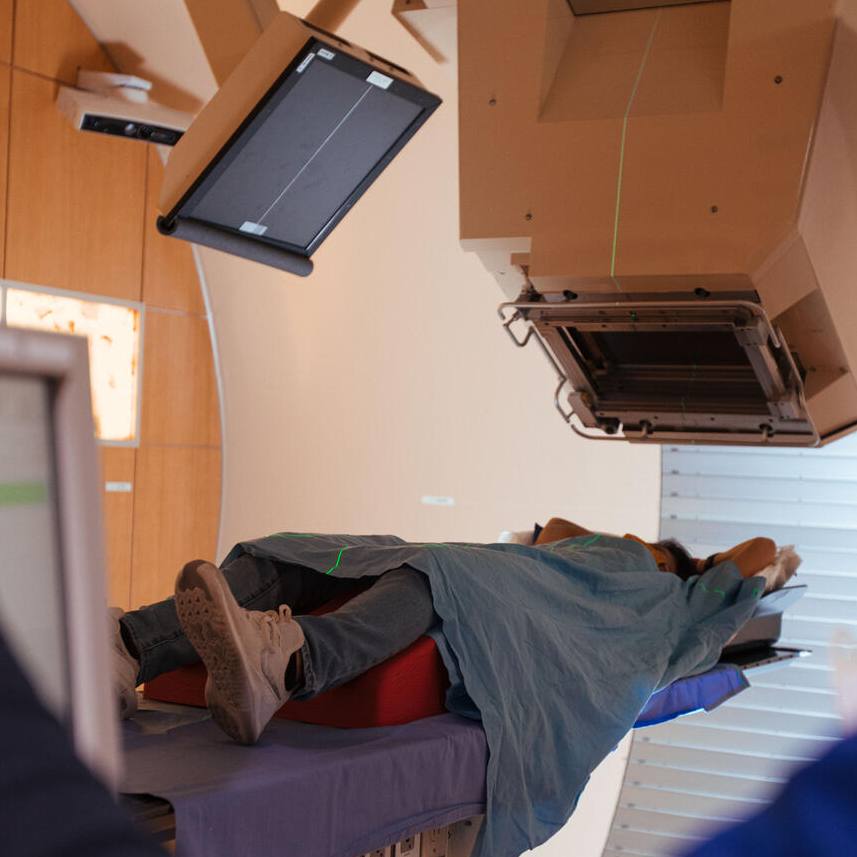-
Remote patient monitoring provides patients with comprehensive care at home

When patients are diagnosed with COVID-19, they are required to self-isolate until the infection is cleared, often for at least two weeks. Some of these patients will be at risk for complications. These patients need support at home in a comprehensive way.
Providing that support was the goal of Mayo Clinic's Remote Patient Monitoring (RPM) team. Remote patient monitoring uses medical technology and devices, sent to patients' homes so that vital signs and symptom assessments can be screened every day. Education materials are shared with patients. A centralized team of remote patient monitoring nurses regularly monitors the data and contacts patients to assess health and progress toward health goals. The program was developed to support patients with complex chronic conditions across the enterprise.
In response to the COVID-19 pandemic, the team needed to urgently and rapidly develop care plans specific to patients with the COVID-19 illness. "We set up a multidisciplinary team to develop monitoring decision trees and order sets working with COVID-19 specialists from Mayo's infectious diseases and pulmonary divisions and then converged efforts with the COVID-19 Frontline Care Team established in general internal medicine," says Tufia Haddad, M.D., Medical Director for the Center for Connected Care's Remote Patient Monitoring team. "Remote patient monitoring's nursing and product teams also stepped in to create a comprehensive COVID-19 remote monitoring program. And we did this quickly."
Two remote patient monitoring programs were developed for patients with COVID-19: one for patients with comorbid conditions at moderate to high risk for complications, and one for lower risk patients.
How the programs work
When a patient tests positive for COVID-19, the physicians in the CFCT call those patients. They determine whether patients need to be evaluated in the Emergency Department or COVID clinic or if they can stay home. If patients stay home, the CFCT determines patient eligibility and fit for one of the remote monitoring programs.
If the patient is considered high risk, they are sent the complete remote patient monitoring kit. This kit includes a weight scale, blood pressure monitor, pulse oximeter, thermometer, and a portable electronic tablet that sends patient's vital signs to Mayo Clinic using Bluetooth technology and ultimately entered into Epic electronic health record.
Low-risk patients are enrolled in the COVID-19 Interactive Care Plan. Patients are sent a pulse oximeter and a thermometer. The care plan is made available through the Mayo Clinic app through which patients are asked to report vitals and symptoms two times a day. This video explains how patients use this COVID-19 care plan.
A centralized team of RPM nurses monitor all vitals and symptom assessments sent by patients. As adverse trends appear, they reach out to patients to better understand the situation and determine next steps.
"These programs provide a standardized, organized approach for monitoring patients. This leads to a more standardized recognition of problems," says Abinash Virk, M.D., a consultant in infectious diseases and one of the providers who helped develop these programs.
Ravindra Ganesh, M.D., a consultant in general internal medicine and director of the COVID-19 Frontline Care Team in the Midwest, adds that the team also uses a standardized approach to determine if patients need to present to the emergency department (ED) or directly admitted to the hospital. "We can determine through the vital signs that are monitored if direct admission to the hospital is appropriate rather than first being seen in the ED. This can minimize exposure to the disease for both staff and other patients."
Monitoring the data
Patients are monitored 24/7 to assess any changes in their biometric data. One of the monitoring goals is to detect any significant changes in the patients' vitals as early as possible.
"We find that, initially, patients with COVID-19 have a fever and then seem to get better. Then, about 7 to 10 days later, they get much worse," says Dr. Virk. "Obtaining biometric data lets us recognize that this downturn is coming and that lets us help the patient sooner."
One biometric that is monitored closely is oxygenation. "We've observed that there is often a drop in oxygen saturation levels, measured by the pulse oximeter, before symptoms like shortness of breath develop. Early detection can limit the severity of decompensation potentially reducing need for admission or shortening a hospital stay," explains Dr. Haddad.
Patient Responses to Remote Patient Monitoring
Patients are responding well to using the technology that is sent to them. "We thought we'd have more technology issues, but the technology is easy to use and work with," says Dr. Ganesh.
Dr. Haddad also points out that the need to stay connected while in self isolation is important. "Patients have a direct link to their care teams through remote monitoring. Nurses will call and discuss symptoms and offer other educational information. These interactions are reassuring for patients and provide affirmation that they are being monitored and cared for."
The program is currently offered across the Mayo Clinic enterprise.
According to Dr. Virk, remote patient monitoring for COVID-19 patients represents a completely new way of thinking about managing patients with one disease. "Our COVID-19 remote patient monitoring programs at Mayo Clinic allow us to monitor patients every day, watching for the little changes that signal clinical worsening for that patient. And then we can use these programs, developed by a Mayo Clinic team, and treat patients before symptoms get worse." Additionally, having close contact with the home recuperating patients also allowed the RPM to re-inforce to the patient the need to remain in home quarantine and use infection prevention principles at home.
COVID-19 updates:
- See how we're providing safe in-person care and virtual visits
- Review the latest COVID-19 resources and research advancements
Information in this post was accurate at the time of its posting. Due to the fluid nature of the COVID-19 pandemic, scientific understanding along with guidelines and recommendations may have changed since the original publication date.
Check the Centers for Disease Control and Prevention website for additional updates on COVID-19. For more information and all your COVID-19 coverage, go to the Mayo Clinic News Network and mayoclinic.org.
Related Articles







